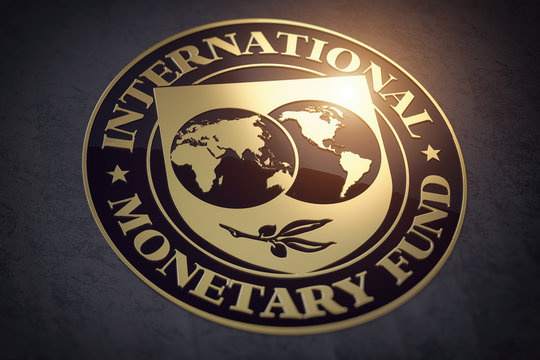Sigma Male: Characteristics and Psychological Implications of the Independent Archetype
The term "sigma male" has gained popularity in modern psychological discussions, especially within internet subcultures and self-help communities. While the concept does not have a firm foundation in established psychological theory, it represents a contemporary archetype of masculinity that has emerged as a counterpoint to more traditional or well-defined personality categories such as the "alpha" male. The sigma male is often portrayed as someone who operates independently, does not rely on social hierarchies, and is highly self-sufficient, all while maintaining an air of mystery and intrigue.

To understand the sigma male in psychological terms, we need to explore the traits, behaviors, and underlying psychological mechanisms that may define this archetype.
Origins and Popularization
The concept of the "sigma male" was popularized in online communities, particularly those centered around self-improvement and discussions about social dynamics. These communities often draw from evolutionary psychology and social dominance theory, which are used to explain human behaviors and group structures. The "alpha" male is traditionally seen as the dominant leader in a social hierarchy, the "beta" male as the subordinate, and the "omega" male as the lowest on the social scale. The sigma male, in contrast, is someone who rejects traditional social structures and exists outside of the hierarchical model. Rather than seeking validation or approval from others, sigma males are self-reliant and content with solitude.
While some of these characteristics might align with established psychological concepts, the idea of the sigma male is largely a contemporary construct that blends elements of different psychological and social theories to create an archetype of masculinity that resonates with certain individuals. Despite its somewhat nebulous origin, the sigma male has become an important cultural symbol, particularly for those who value independence, autonomy, and a nonconformist approach to life.
Key Characteristics of Sigma Males
The sigma male is typically described as someone who is introverted, independent, self-sufficient, and emotionally detached. These qualities reflect a personality that values autonomy over social status, and a preference for self-direction over external validation. Below, we explore these characteristics in more detail.
1. Independence and Self-Sufficiency
One of the most defining traits of the sigma male is their profound independence. Unlike the alpha male, who seeks to dominate and lead within social groups, the sigma male does not rely on external sources of validation or approval. They have a strong sense of self and do not need the affirmation of others to feel secure or successful. This independence often extends to their lifestyle choices, as sigma males tend to prefer solitary activities and work environments that allow them to operate without interference.
In psychological terms, this trait aligns with a high degree of self-reliance, which can be linked to certain personality traits in the Five Factor Model of Personality. Sigma males likely score high in traits such as conscientiousness (indicating a strong sense of responsibility and self-discipline) and emotional stability (indicating an ability to remain calm and resilient under pressure). Their preference for autonomy also suggests a low level of agreeableness, as they are less concerned with conforming to social norms or accommodating the needs of others.
2. Introversion and Solitude
Sigma males are often described as introverts, preferring to spend time alone or in small, close-knit groups rather than seeking the company of large social circles. This introversion is not necessarily a sign of shyness or social anxiety but rather a preference for solitude and introspection. Sigma males derive their energy from being alone, and they often find that time spent in social situations drains them rather than rejuvenates them, as is the case with extroverts.
In psychological terms, this behavior is aligned with the concept of introversion from Carl Jung's psychological types theory. Introverts tend to be more self-focused, gaining satisfaction from internal thoughts and ideas rather than external stimuli. They also tend to be more reflective, considering their actions and emotions more deeply than extroverts, who are more likely to seek external experiences to energize themselves. Sigma males may also possess a high degree of self-awareness, as their preference for solitude allows them to reflect on their goals, values, and personal growth.
3. Mysterious and Unconventional
Another common characteristic of the sigma male is their mysterious, enigmatic persona. They tend to avoid revealing too much about themselves to others, creating an air of intrigue. This mysteriousness often stems from a desire to remain private and to avoid being easily understood or categorized by others. Sigma males are often seen as individuals who keep their personal lives and thoughts closely guarded, which adds to their allure.
This aspect of the sigma male personality aligns with psychological theories related to self-presentation and social identity. People who are highly private or who avoid sharing personal information are often seen as possessing a high degree of self-control and an awareness of the social impact of their behavior. Sigma males, therefore, may be highly strategic in their interactions with others, carefully managing how they are perceived and resisting the pressure to conform to societal expectations.
4. Nonconformity and Rejection of Social Hierarchies
Sigma males are often characterized by their rejection of traditional social hierarchies. While alpha males are seen as leaders who strive to be at the top of the social ladder, sigma males have no interest in climbing this ladder. They are not concerned with achieving status, popularity, or dominance in social settings. Instead, they prefer to operate outside of these established norms, choosing to define success on their own terms.
Psychologically, this rejection of social hierarchies can be understood in terms of self-determination theory, which posits that individuals have an inherent need for autonomy, competence, and relatedness. Sigma males are likely to prioritize autonomy above all else, resisting the pressure to conform to external standards of success or approval. This need for autonomy may also reflect a high degree of intrinsic motivation, as sigma males are driven by internal goals and values rather than external rewards or recognition.
5. Emotional Detachment and Self-Control
Sigma males often exhibit a high degree of emotional detachment and self-control. They tend to keep their emotions in check, and they do not readily express vulnerability or dependence on others. This emotional reserve can be seen as a sign of maturity and emotional intelligence, as sigma males are often able to navigate challenging situations without being overwhelmed by their feelings.
From a psychological perspective, this emotional detachment can be related to traits such as emotional stability and self-regulation, which are part of the Five Factor Model of Personality. Sigma males are likely to score high in emotional stability, which allows them to remain calm and collected even in high-pressure situations. Their ability to regulate their emotions also reflects a high level of self-awareness and self-discipline, as they are able to manage their responses in a way that aligns with their goals and values.
6. Strong Sense of Purpose and Direction
Despite their independence and introversion, sigma males are not aimless wanderers. They tend to have a strong sense of purpose and direction in life. This purpose is often self-defined and may revolve around personal growth, creative expression, or the pursuit of knowledge. Sigma males do not rely on external validation or societal expectations to guide their actions; instead, they chart their own course based on their internal desires and values.
In psychological terms, this sense of purpose can be linked to the concept of intrinsic motivation. Sigma males are often driven by internal desires and goals, rather than seeking rewards or recognition from others. This internal drive aligns with the psychological theory of self-determination, which emphasizes the importance of autonomy, competence, and relatedness in fostering motivation and personal growth.
Psychological Implications
While the concept of the sigma male is not a formally recognized psychological archetype, many of the traits attributed to this personality type align with established psychological theories. The sigma male’s preference for independence, introversion, and emotional detachment can be understood in terms of personality traits such as conscientiousness, emotional stability, and self-reliance. Additionally, the sigma male’s rejection of social hierarchies and nonconformity reflect a strong sense of autonomy and a desire to live life on their own terms.
However, it is important to note that the sigma male archetype is not without its limitations. The idea of the sigma male can sometimes be overly idealized, leading to unrealistic expectations about what it means to be independent or emotionally detached. In reality, healthy social connections and emotional expression are essential for well-being, and an overemphasis on solitude or self-reliance can lead to feelings of isolation or disconnection from others. As with any personality type, a balance between independence and social engagement is key to maintaining emotional health and fulfillment.
Conclusion
The sigma male archetype represents a modern construct of masculinity that values independence, nonconformity, and emotional detachment. While this personality type may resonate with individuals who prioritize self-reliance and autonomy, it is important to recognize that these traits exist on a spectrum and can manifest in different ways across individuals. Ultimately, the sigma male is a reminder of the importance of self-awareness and the pursuit of personal goals, even if these goals fall outside the boundaries of traditional social expectations.
Photo from pexels





